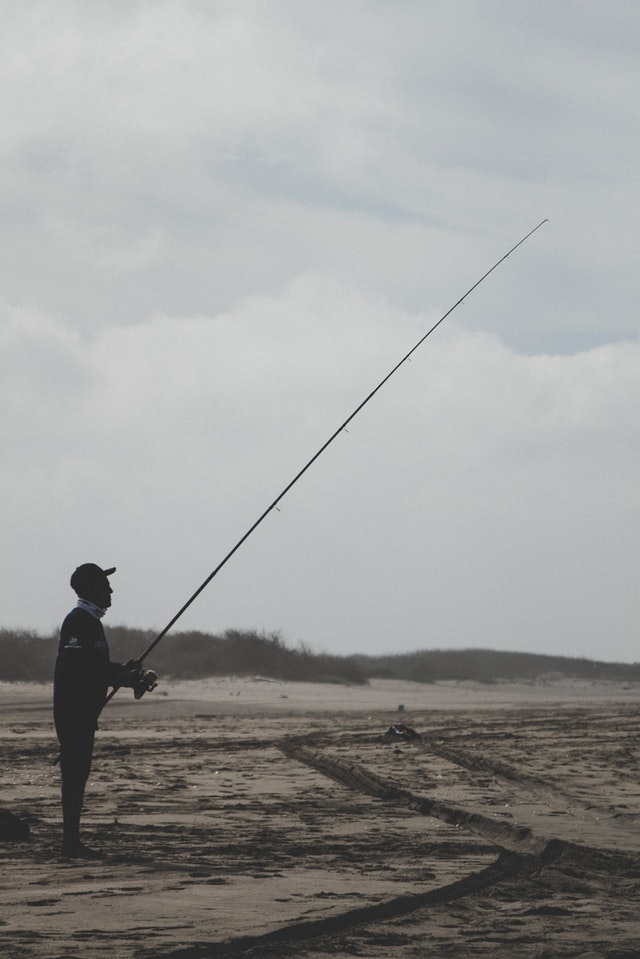Peripheral Vision
Peripheral Vision
One
of the most important skills to learn as a fisherman is the peripheral
awareness. That is, you are training to spot elements of your peripheral vision
that alert you to the movement of active fish feeding.
Peripheral
vision is what you can see outside the very center of your gaze. The center of
your gaze is called focal vision and, basically, when you look straight
Your
peripheral vision is everything else. The figures vary, but according to
studies conducted by NASA, the peripheral vision of a person extends to about
167 degrees, the head and eyes fixed. If the subject turns his head and eyes,
this vision extends to 237 degrees, which allows him to see literally behind
him.
You
can quickly assess your own peripheral vision by looking straight ahead at a
fixed point on a wall at eye level. Extend your arms to your sides and point
your fingers. If your arms are stretched by your side, it's 180 degrees. Can
you see your fingers? Otherwise, bring them a little forward.
Peripheral
vision, also called lateral vision, is effective at capturing motion but
mediocre for capturing colors. It's a function of the construction of the eye.
The retina has two types of photo receptors, rods and cones. The cones, densely
packed in the center of the eyes, take on colors. Sticks that are denser
outside the central part of the retina are responsible for night vision, motion
detection, and peripheral vision.
What
does this have to do with fishing? Several things. Instead of just looking for
clues in the water right in front of you, expand your peripheral vision and
dramatically increase the reach of your vision.
You
may not be able to focus on something you will see from your peripheral vision,
but if you have a wider field of vision, you will see, and thus filter, a wider
range of clues. In addition, movement, which is an area in which peripheral
vision excels, is one of the best ways to spot fish.
Just
like when driving on the road and you discover a wide range of visual cues, such
as exit signs or brake lights, and by your side, like the other cars in the
next lane, you must capitalize on your performances. Entire field of view.
 After
finding a fish, I do not stop using my peripheral vision. I continue to look
through the water to focus on the bottom of the river, while keeping the fish
and fly in my peripheral vision. It's only after distribution that I focus on
fish.
After
finding a fish, I do not stop using my peripheral vision. I continue to look
through the water to focus on the bottom of the river, while keeping the fish
and fly in my peripheral vision. It's only after distribution that I focus on
fish.
One
of the best ways to practice identifying a movement with your peripheral vision
is to look for a distant object in the ocean and use your side vision. While
keeping your eyes on the object, try to see other objects up and down the
corners of your eyes. Do it every time you go fishing, and each time, try to
increase your field of vision. Over time, you will see other parts of the river
throughout your field of vision and you will be more efficient at hunting the
fish.
First,
the longer you look at an object, the less effective your peripheral vision
becomes. Lack of eye movement means that you tend to look using only your
central vision. The solution to avoid tunnel vision is to keep your eyes moving
when you search for fish.
By
scanning with your eyes, you avoid focusing too long on an object. You also use
your peripheral vision by increasing your viewing angle and increasing your
chances of seeing objects outside of your focal point.
The
other essential thing is to learn to identify objects other than fish, such as
rocks, submerged vegetation, logs and sea grass. The more you know better, the
easier and faster the scan will be.
The
last point to emphasize is that, if your eyes become more beautiful, look at
something picturesque like an open expanse of water or a mountain. In this way,
you let your central vision rest by not focusing on a particular object.









No comments
Help Us to improve our web by comments and suggestions.